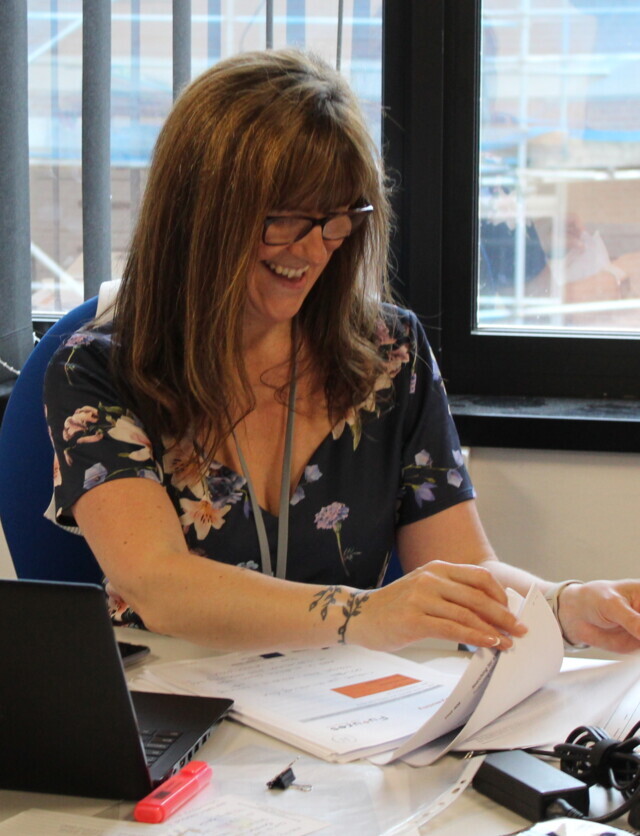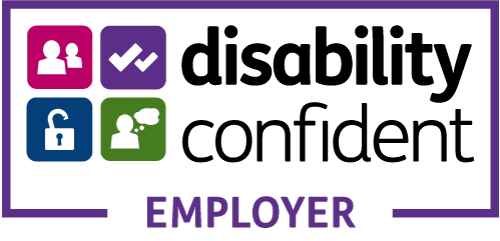In the four years since the pandemic ushered us toward living in a virtual world, there has been a sharp rise in online learning. Though it existed long before 2020 – with the first online course being created in 1968 - recent years have seen a significant increase in the amount of money invested by businesses into improving online learning offerings. A study from Research and Markets estimates that the e-learning industry will grow by over 250% by 2026, which should come as no surprise.
But does virtual training outweigh the benefits of completing a course in a face-to-face teaching environment? We looked through the research to find out.
For many years there has been a debate around whether online or face-to-face learning is better, and it appears that no one can agree. Some research finds that learners are five times more likely to complete a training course when attending a teacher-led class, while another study concludes that online learning results in either equal or better course performance.
It would be fair to say that both sides of the coin have their benefits, and perhaps the decision on which path to take should fall to the learners themselves, to consider their own needs and learning styles and choose the training format that is right for them.
With so much mixed messaging online, we’re here to cut through the noise and present the benefits to both sides.
Face-to-face teaching still has a place in modern-day learning
Despite the rising popularity of online learning, face-to-face learning in a more traditional classroom setting hasn’t disappeared – and it shouldn’t! The benefits of in-person learning include:
Increased focus - In a dedicated learning environment, students can fully focus on the material being shared, whereas learning at home can provide distractions like scrolling on phones, getting caught up in chores, or the general demands of home life.
On-the-spot support - Being in a classroom means immediate support from both tutors and fellow learners. Sharing ideas and finding different perspectives is made easier.
A sense of community - Face-to-face learning opens opportunities to make new connections and reap the benefits of a shared experience. Many people find it easier to connect with people in-person.
Tailored training - One of the largest benefits of in-person training is the presence of a qualified tutor who can tailor the course content to the learners needs. Tutors can spot where students need extra support and adjust their lesson accordingly in the moment.
A comfortable environment - Many people feel more at home in a traditional classroom setting – especially those who struggle to get to grips with technology or aren’t able to access a reliable internet connection. Face-to-face learning removes these technological barriers and can help students to feel more comfortable, which will make their learning easier.

Caroline Killen – who leads the Business Administration course at Futures – has seen the positive impact of classroom learning in action:
Many people come to our classrooms with low self-esteem and confidence, feeling anxious about what the course will be like - especially if they had negative experiences when they were at school. So, we strive to make our classrooms a welcoming, inclusive environment. When teaching face-to-face, we as tutors can adapt to ensure our learners feel comfortable, relaxed, and ready to learn. It's always so wonderful to see learners who came in on day one alone, leaving at the end of the course with new friends and an improved confidence having had a really good learning experience.
Online learning makes education accessible for all
As online learning becomes more accessible to more people, many choose this route thanks to the numerous benefits it offers, including:
More access – For those living in more remote areas, online learning opens up access to a range of courses that aren’t available from their local training providers, helping them to pursue a passion or start a career that could otherwise have been out of reach.
Flexibility – Many people choose an online course to make learning fit into their schedule. This is particularly beneficial to non-traditional students, who might be constricted by family or work commitments – without online learning, they might not be able to start a course at all.
Saving money – Without the need to rent, light and heat a physical location, the cost of online courses is often much cheaper than a face-to-face course, making them more accessible to those from less-advantaged backgrounds. Being able to stay at home to complete the course also means that learners can save money on travel costs.
Personalised pace – While some online courses deliver content through live seminars or workshops, others simply provide the course materials and allow learners to work through the content at their own pace, with the support of a tutor available when needed. This allows learners to completely personalise the pace of their learning and tailor their training to their own needs.

In her role as a distance learning tutor for the Level 2 Information, Advice and Guidance course, Vicky Emery has first-hand experience of the benefits online learning can have:
I have learners that are from all over the UK due to the delivery being done online. They can access their work at a time that’s convenient to them so they can fit their studies around their work and life, and there is always positive feedback about the flexibility of the learning. As online tutors, we’re always there behind the scenes. Students can phone or email us for one-to-one support throughout the course and we’re always there to advise and help in whatever way they need.
That’s enough theory – what about the reality?
We spoke to Favour Osaghae, who has joined us for both face-to-face and online courses, to get his insights on both sides of the coin.
"I really wanted to chase my education and try to achieve as much as I can. I encountered Futures and they gave me the platform to do my Maths and the opportunity to concentrate and do it step-by-step.”
Favour completed the Level 1 Maths qualification through face-to-face learning at our Nottingham centre, and really felt the benefits of being in a classroom setting:
“I was honestly quite amazed with the success that I had. The teacher was very helpful with telling me what to do and my areas for improvement. I got constant feedback and that was really helpful for me passing the Level 1.”
After completing the Level 1 course, Favour advanced onto the Level 2 – this time online.
“Since I didn’t really have time to come in, I thought doing the online learning would be very helpful. After a while I noticed I was getting inconsistent with my learning because I was so busy and distracted at home. I didn’t have the chance to fully focus like I had been in the classroom.”
Favour returned to face-to-face learning to complete his Level 2 – but he doesn’t think that people should avoid online learning – just that different people have different styles of learning:
“I would recommend the online learning for people who can't come in physically – it's great for people who are good at focusing at home, and who want to have the time to go through the course by themselves.
For me, the face-to-face learning was better because having a teacher to show a variety of different learning methods and give me feedback in the moment was really helpful to improving my knowledge.”











